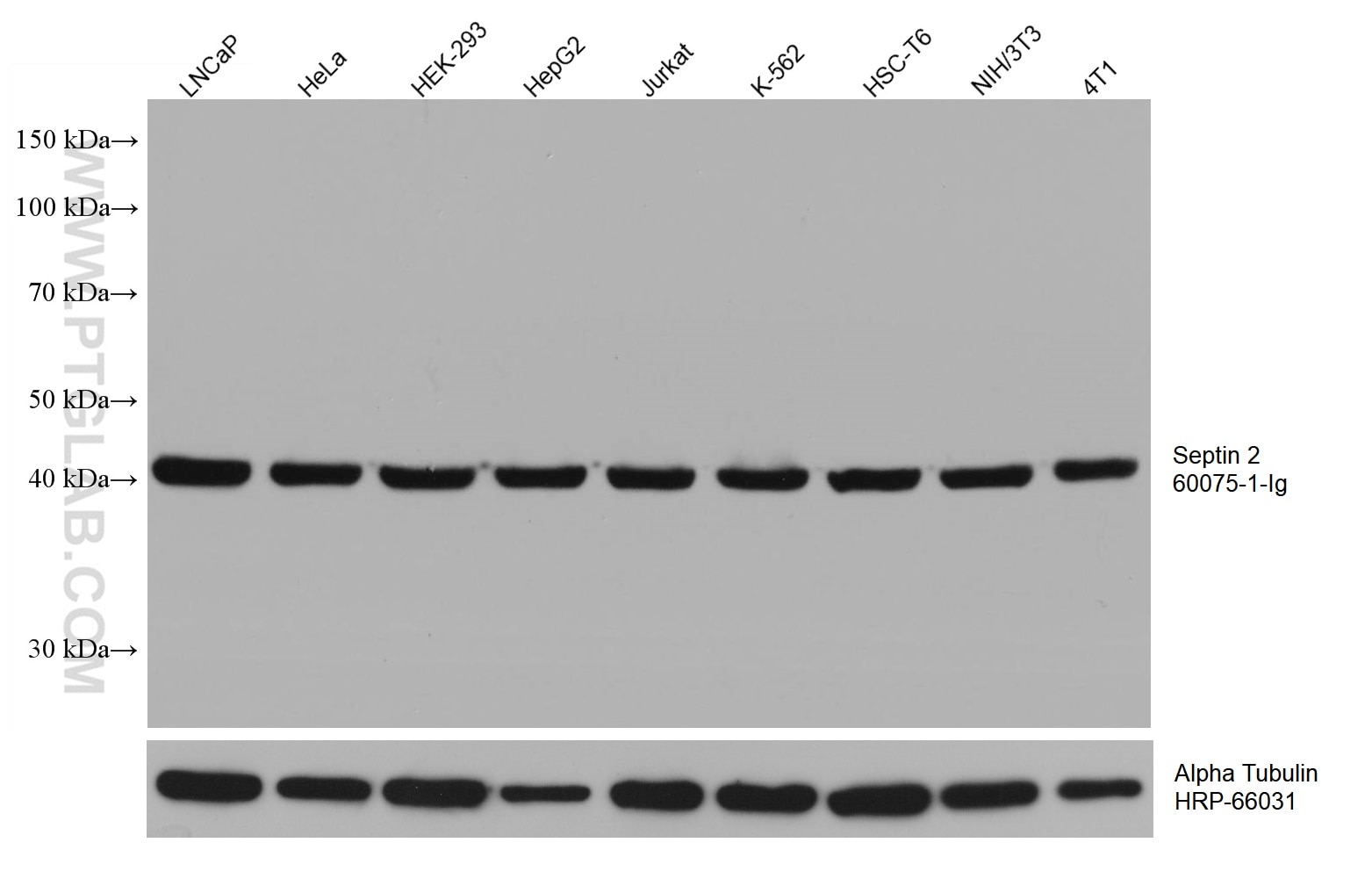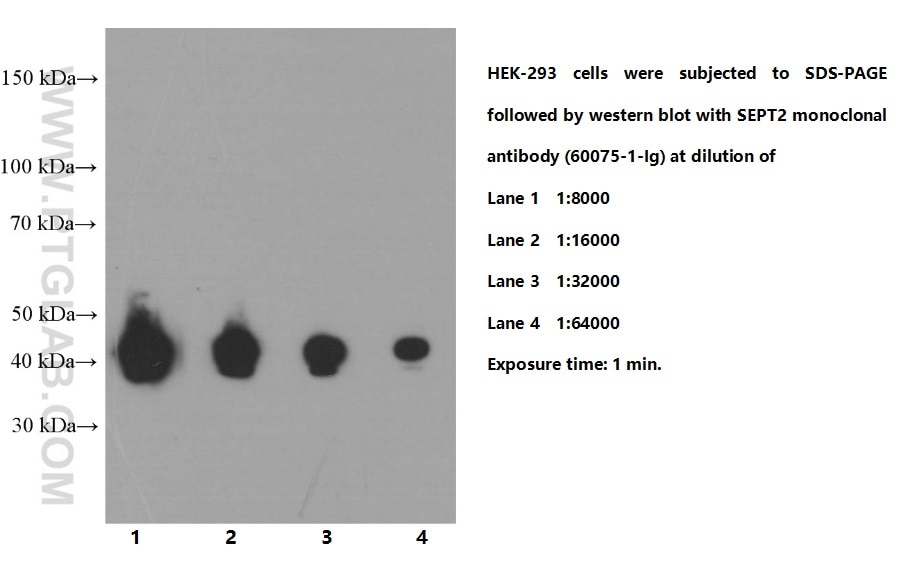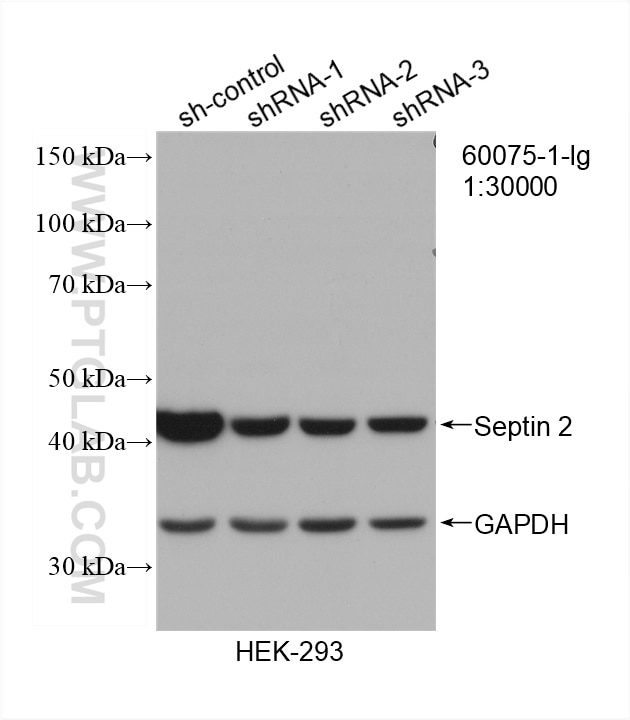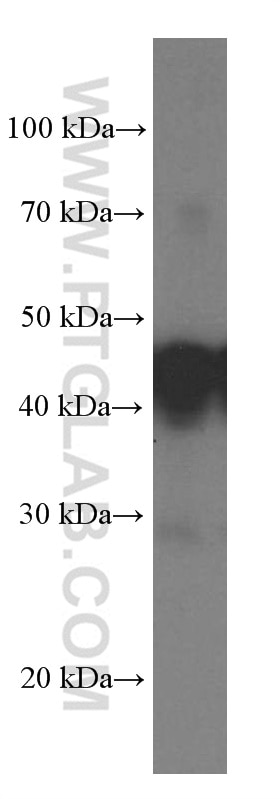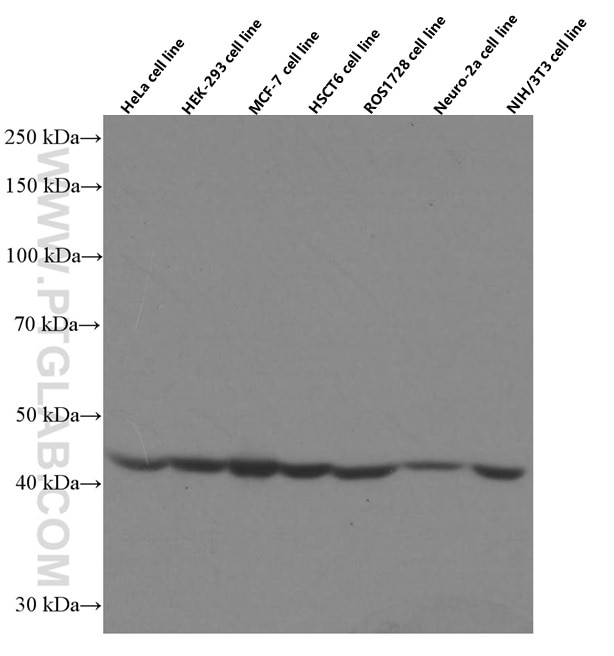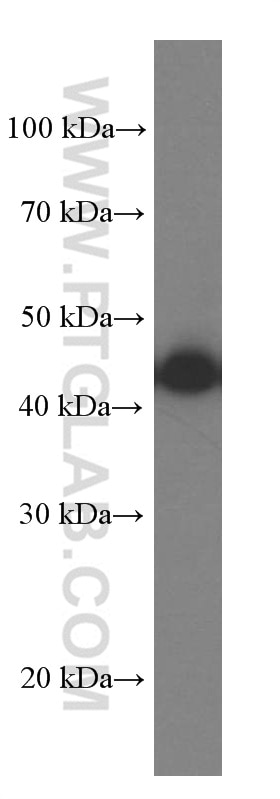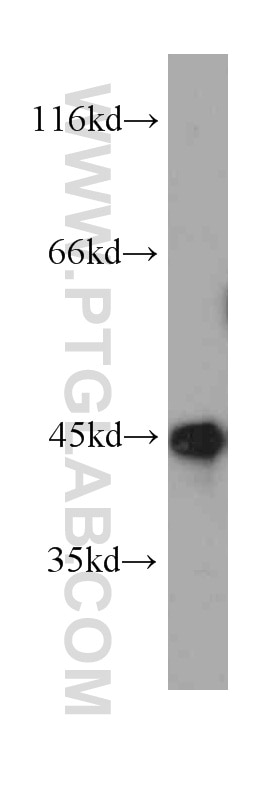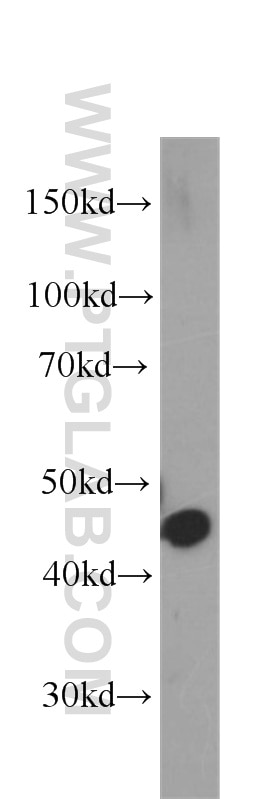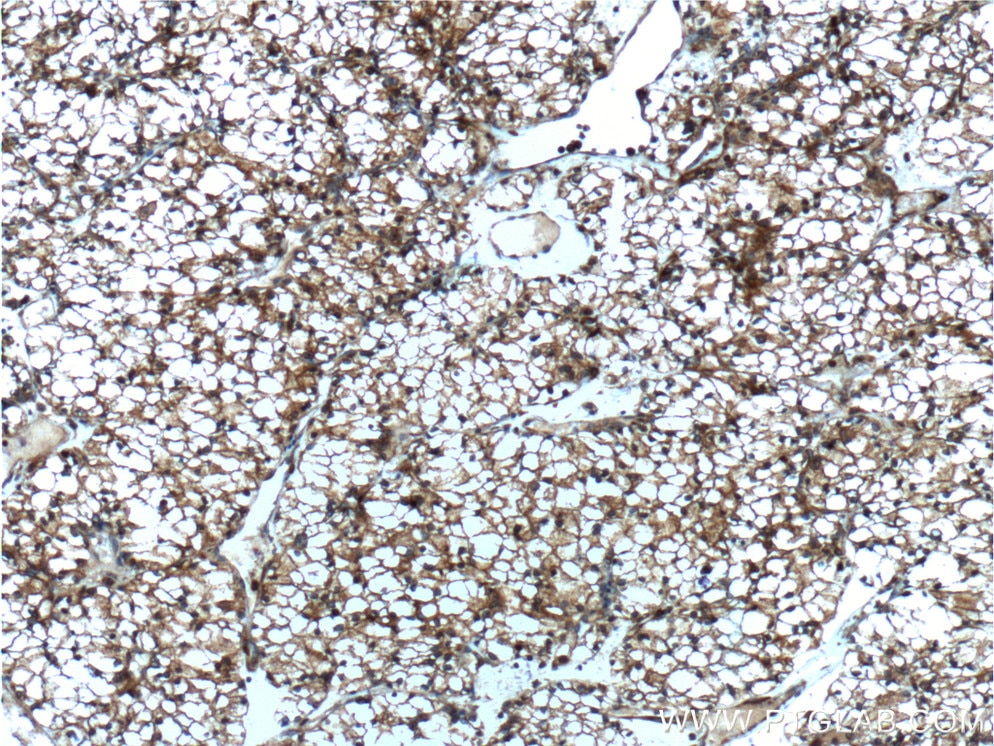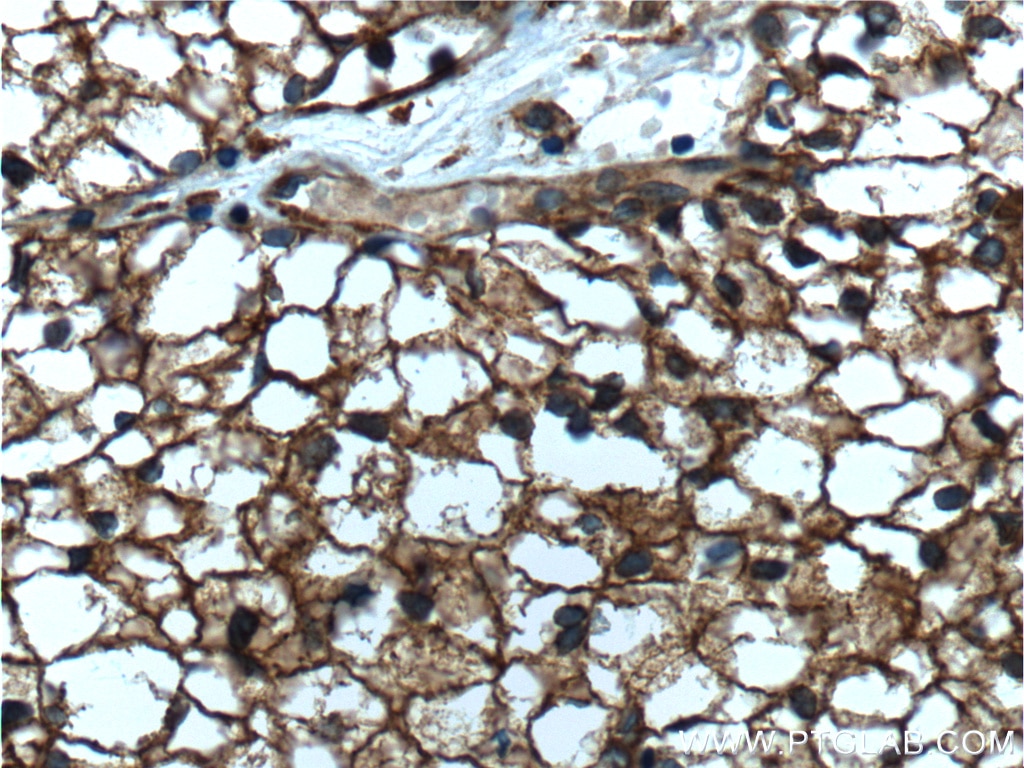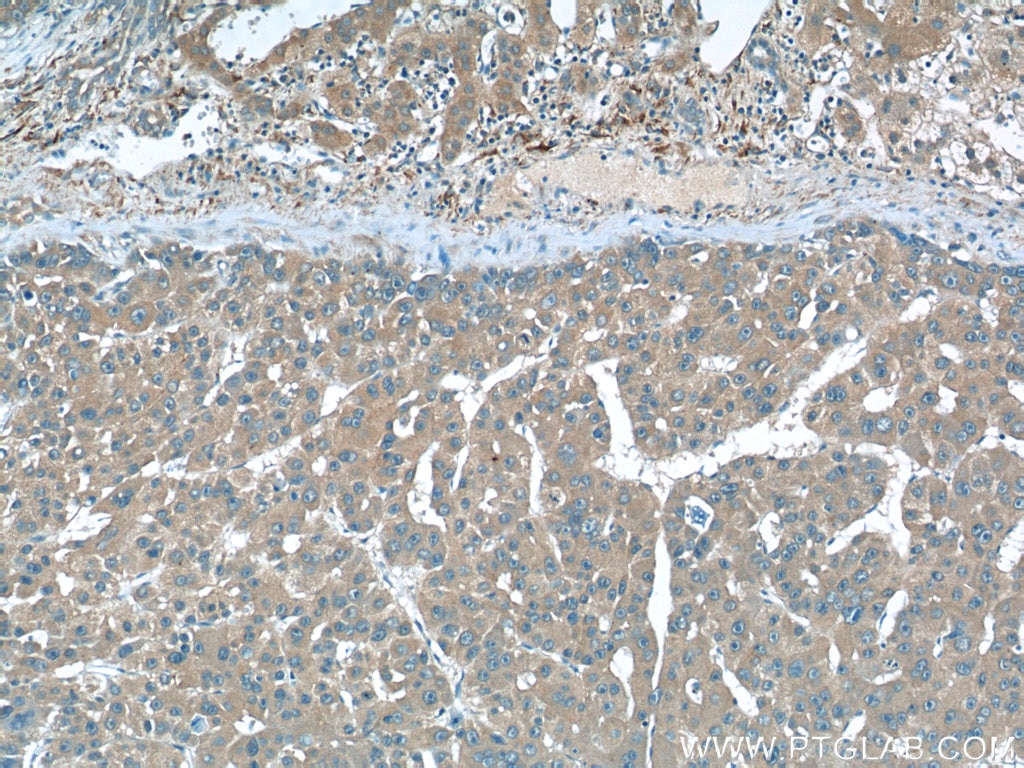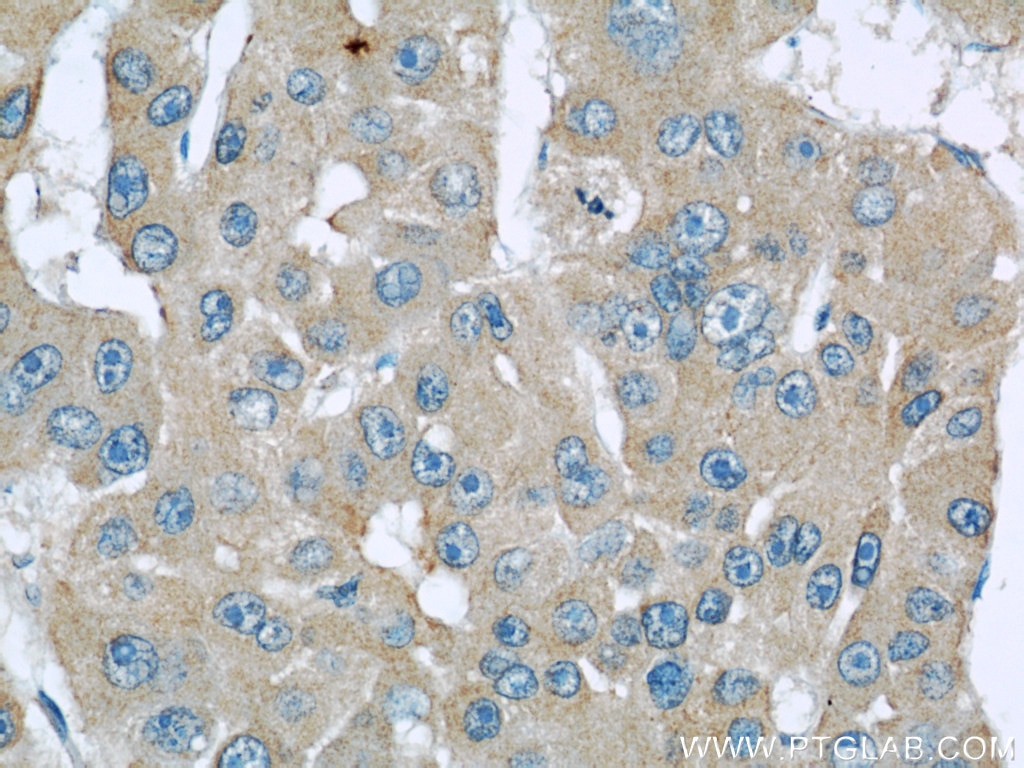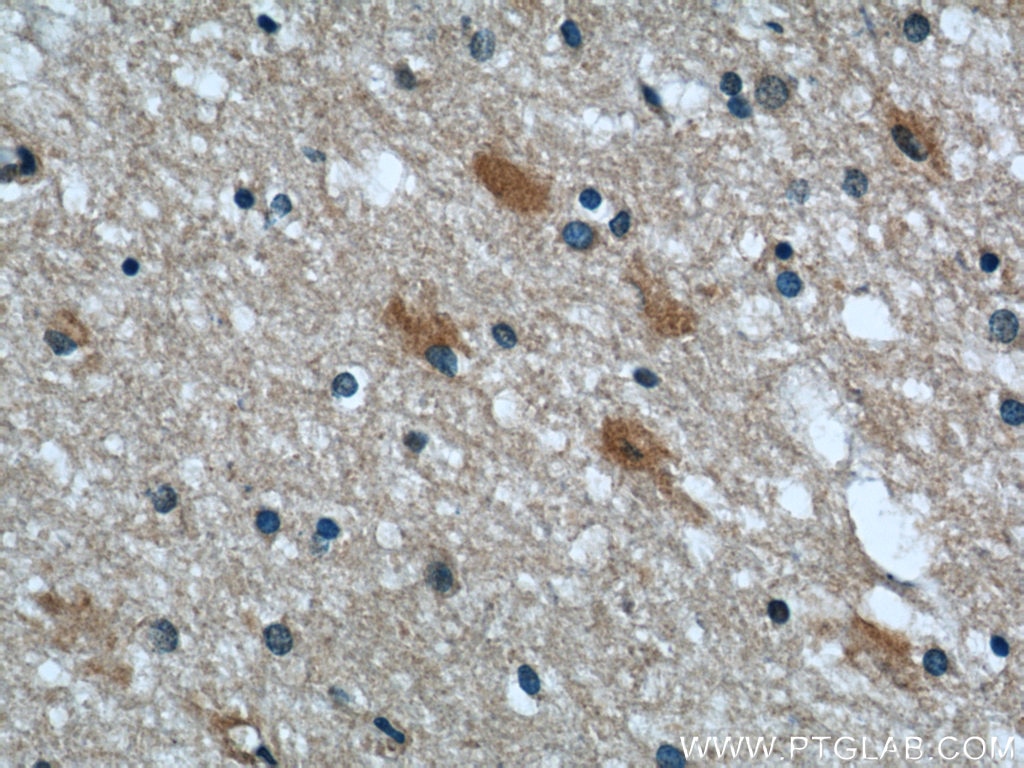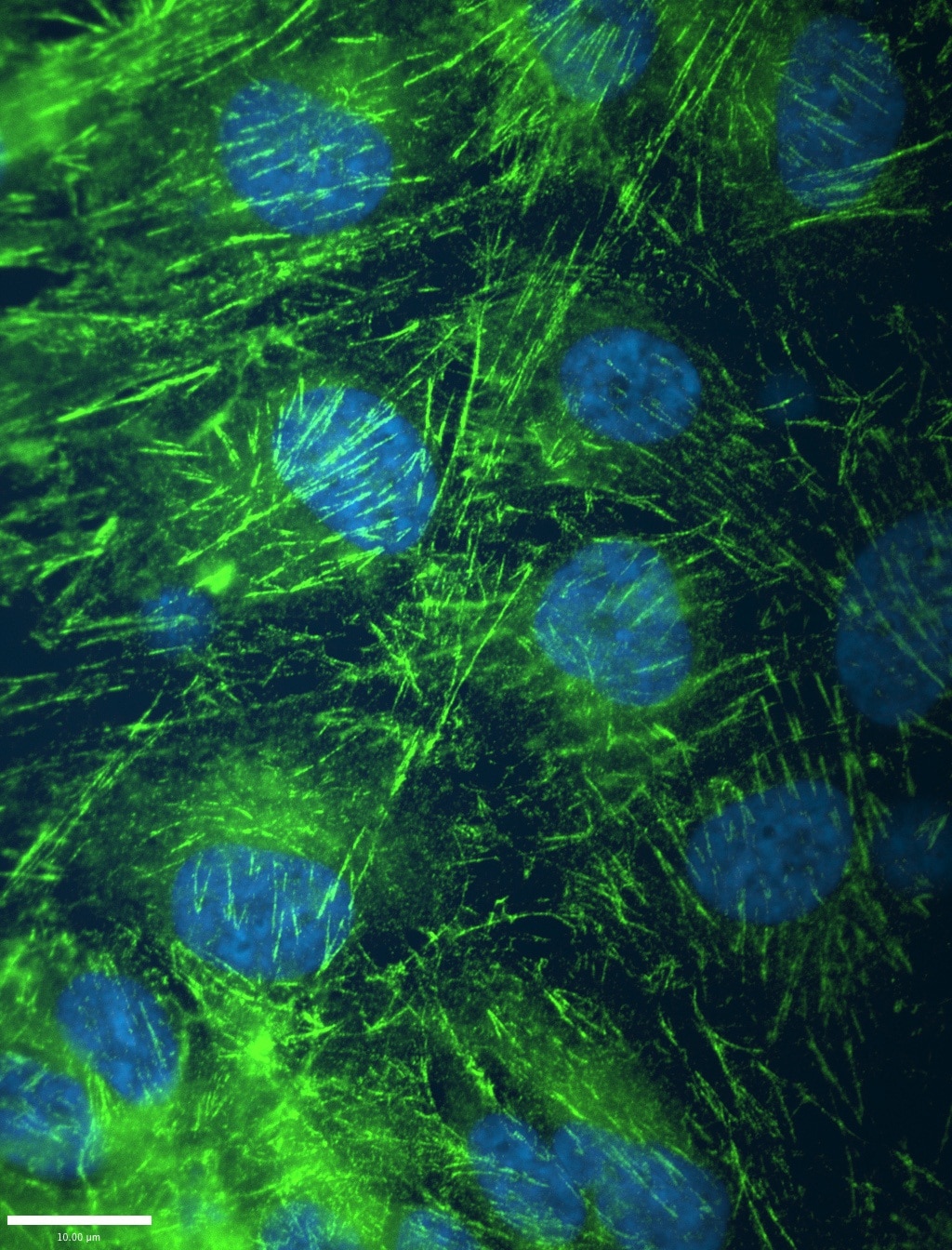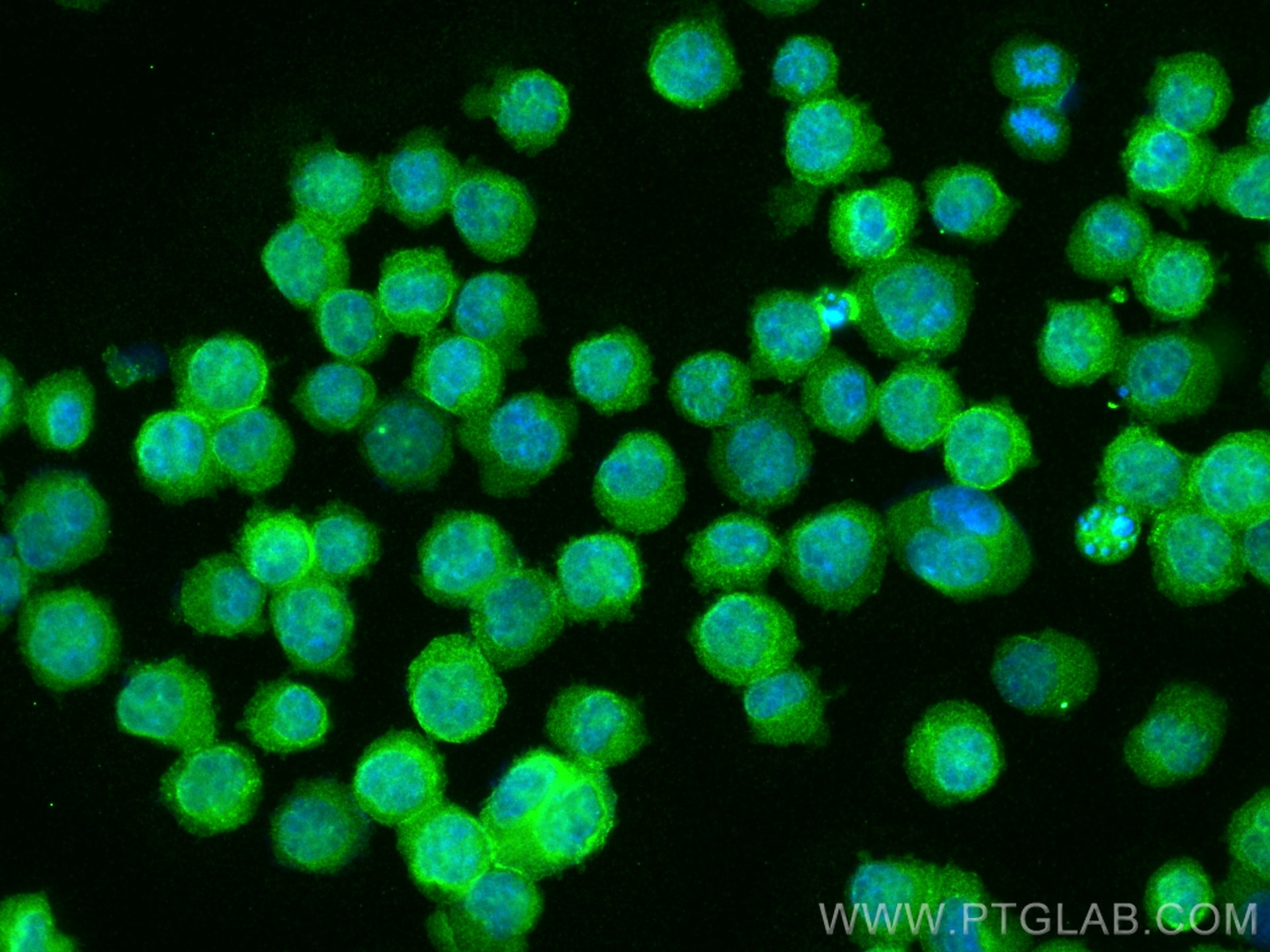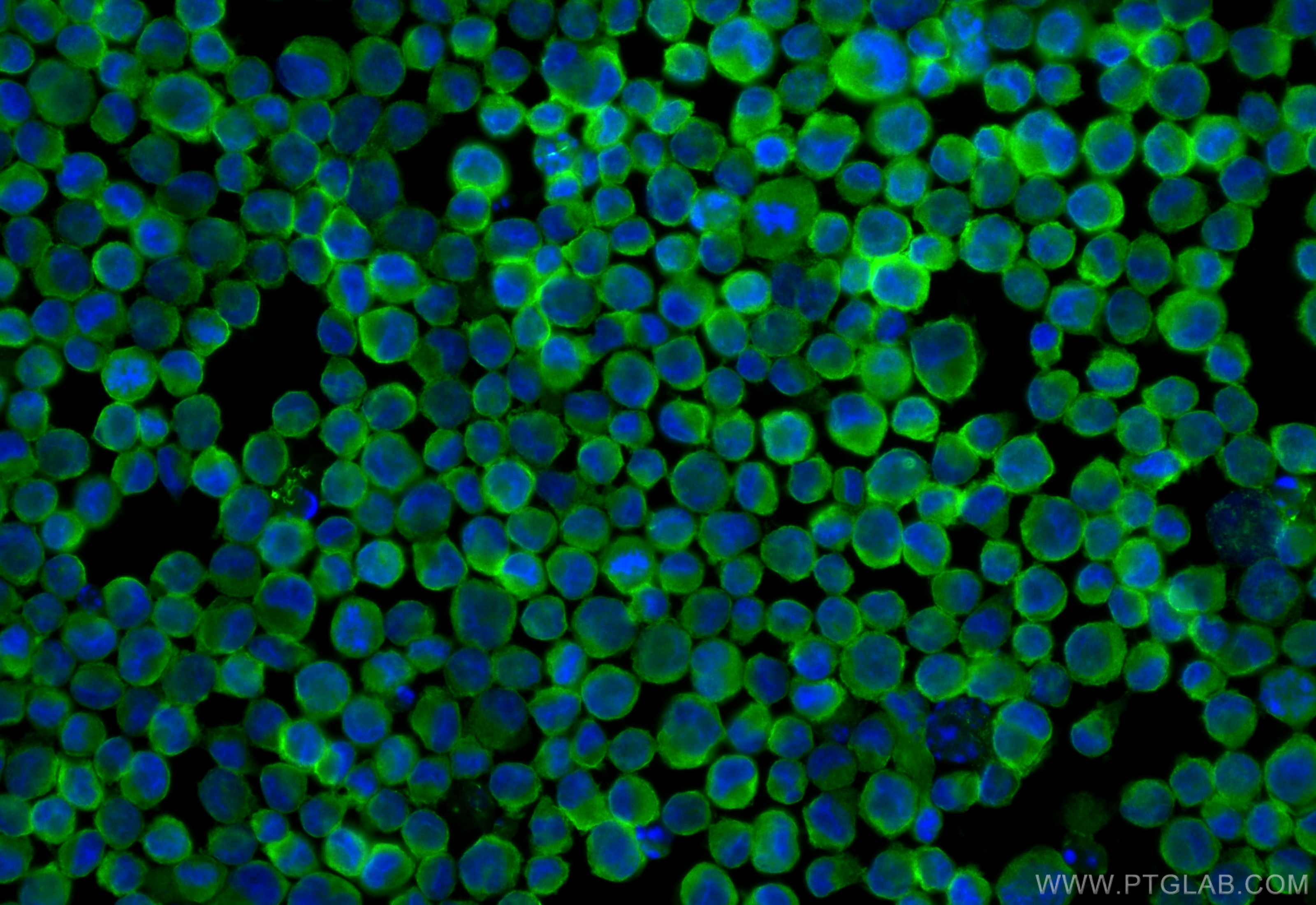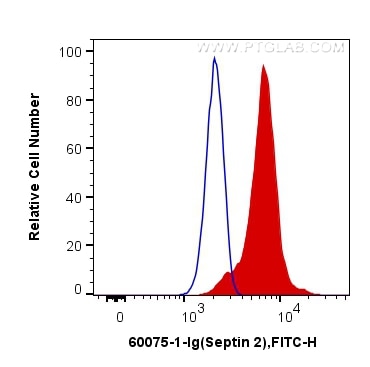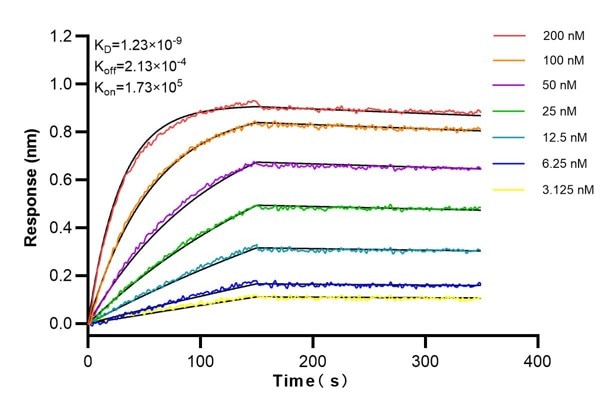Validation Data Gallery
Tested Applications
| Positive WB detected in | LNCaP cells, Jurkat cells, fetal human brain tissue, human testis tissue, HeLa cells, HEK-293 cells, HepG2 cells, K-562 cells, HSC-T6 cells, NIH/3T3 cells, 4T1 cells, MCF-7 cells, HSCT6 cells, ROS1728 cells, Neuro-2A cells |
| Positive IHC detected in | human renal cell carcinoma tissue, human brain tissue, human liver cancer tissue Note: suggested antigen retrieval with TE buffer pH 9.0; (*) Alternatively, antigen retrieval may be performed with citrate buffer pH 6.0 |
| Positive IF/ICC detected in | K-562 cells, hTERT-RPE cells |
| Positive FC (Intra) detected in | K-562 cells |
Recommended dilution
| Application | Dilution |
|---|---|
| Western Blot (WB) | WB : 1:20000-1:100000 |
| Immunohistochemistry (IHC) | IHC : 1:50-1:2000 |
| Immunofluorescence (IF)/ICC | IF/ICC : 1:400-1:1600 |
| Flow Cytometry (FC) (INTRA) | FC (INTRA) : 0.40 ug per 10^6 cells in a 100 µl suspension |
| It is recommended that this reagent should be titrated in each testing system to obtain optimal results. | |
| Sample-dependent, Check data in validation data gallery. | |
Published Applications
| KD/KO | See 3 publications below |
| WB | See 14 publications below |
| IF | See 7 publications below |
| CoIP | See 1 publications below |
Product Information
60075-1-Ig targets Septin 2 in WB, IHC, IF/ICC, FC (Intra), CoIP, ELISA applications and shows reactivity with human, mouse, rat samples.
| Tested Reactivity | human, mouse, rat |
| Cited Reactivity | human, mouse, rat, canine |
| Host / Isotype | Mouse / IgG1 |
| Class | Monoclonal |
| Type | Antibody |
| Immunogen |
CatNo: Ag1946 Product name: Recombinant human SEPT2 protein Source: e coli.-derived, PGEX-4T Tag: GST Domain: 1-361 aa of BC014455 Sequence: MSKQQPTQFINPETPGYVGFANLPNQVHRKSVKKGFEFTLMVVGESGLGKSTLINSLFLTDLYPERVISGAAEKIERTVQIEASTVEIEERGVKLRLTVVDTPGYGDAINCRDCFKTIISYIDEQFERYLHDESGLNRRHIIDNRVHCCFYFISPFGHGLKPLDVAFMKAIHNKVNIVPVIAKADTLTLKERERLKKRILDEIEEHNIKIYHLPDAESDEDEDFKEQTRLLKASIPFSVVGSNQLIEAKGKKVRGRLYPWGVVEVENPEHNDFLKLRTMLITHMQDLQEVTQDLHYENFRSERLKRGGRKVENEDMNKDQILLEKEAELRRMQEMIARMQAQMQMQMQGGDGDGGALGHHV 相同性解析による交差性が予測される生物種 |
| Full Name | septin 2 |
| Calculated molecular weight | 41 kDa |
| Observed molecular weight | 42-45 kDa |
| GenBank accession number | BC014455 |
| Gene Symbol | Septin 2 |
| Gene ID (NCBI) | 4735 |
| RRID | AB_2187016 |
| Conjugate | Unconjugated |
| Form | |
| Form | Liquid |
| Purification Method | Protein G purification |
| UNIPROT ID | Q15019 |
| Storage Buffer | PBS with 0.02% sodium azide and 50% glycerol{{ptg:BufferTemp}}7.3 |
| Storage Conditions | Store at -20°C. Stable for one year after shipment. Aliquoting is unnecessary for -20oC storage. |
Background Information
Septin 2, also named as DIFF6, KIAA0158, NEDD5, belongs to the septin family. It is a filament-forming cytoskeletal GTPase. Septin 2 is required for normal organization of the actin cytoskeleton. It plays a role in ciliogenesis and collective cell movements. Septin 2 is coordinated expression with Septin 6 and Septin 7. (PMID:21737677)
Protocols
| Product Specific Protocols | |
|---|---|
| IF protocol for Septin 2 antibody 60075-1-Ig | Download protocol |
| IHC protocol for Septin 2 antibody 60075-1-Ig | Download protocol |
| WB protocol for Septin 2 antibody 60075-1-Ig | Download protocol |
| Standard Protocols | |
|---|---|
| Click here to view our Standard Protocols |
Publications
| Species | Application | Title |
|---|---|---|
Nat Genet A transition zone complex regulates mammalian ciliogenesis and ciliary membrane composition. | ||
Cell Res Regulators of tubulin polyglutamylation control nuclear shape and cilium disassembly by balancing microtubule and actin assembly. | ||
Cell Rep Cdc42EP3/BORG2 and Septin Network Enables Mechano-transduction and the Emergence of Cancer-Associated Fibroblasts. | ||

